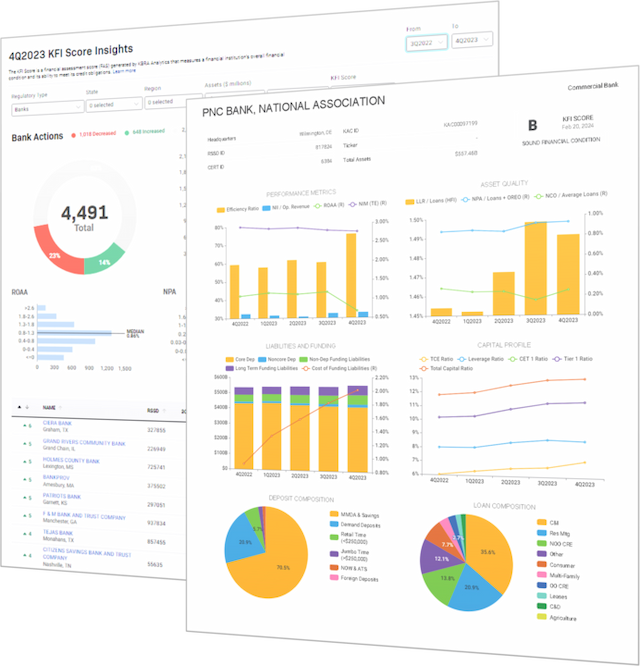KBRA Financial Intelligence
Improving Homebuilding Data Could Boost Construction and Development Lending
By KFI Staff
Last week, KFI highlighted the continually subdued growth of residential mortgage loans and the banks that rely most heavily on that line of business. Unsurprisingly, total home sales have followed a similar trajectory, as mortgage originations and home sales remain well below their 2020-21 boom era highs. Notably, however, new home sales have recovered more aggressively than sales of existing homes. New unit sales made up roughly 15.76% of all U.S. single-family home sales in July, which was the highest share in the past year of data.
Recent home construction data, much like housing starts and residential building permits, had shown a significant slowdown of homebuilding in the pipeline until July, but that tide could be turning. Although the annualized rate of both single-family starts and permits remained slightly below their three-year moving averages in August, U.S. Census Bureau data indicated a strong rebound took place throughout the month. The 135,000-unit jump in single-family starts was the largest month-over-month (MoM) increase since last November.

Whether homebuilding continues to languish or retains momentum from August’s rally will carry significant implications for banks that rely heavily on construction loans in the residential sector. Per KFI data, the outstanding sum of domestic loans secured by 1-4 family residential construction projects among U.S. commercial banks has declined year-over-year (YoY) across each of the four quarters to 2Q 2024. In that latest quarter of data, the reduction in residential construction lending quickened to a pace of 10.27% YoY. That drawdown marks a divergence from other construction and land development loans, which continued to grow at a 5.21% annual rate. These two loan classifications comprise the domestic construction, land development, and other land loans category of banks’ total real estate loans within FFIEC call report forms. The combined value of these two classifications can be retrieved with KFI’s Excel add-in by using the mnemonic KCALLCDLNS.

As the volume of C&D lending has decreased, the average delinquency rate associated with these loans among all U.S. banks has ticked up, reaching a three-year high of 1.37% in 2Q 2024. KFI data shows that New York’s NorthEast Community Bank (KFI Score: C+) stands out as the American bank with the highest concentration of C&D loans on its books. At 77.66%, the depository’s ratio of C&D loans to total loans is more than 9.2x the average among a cohort of banks with at least $500 million in assets. NorthEast Community Bank has recently defied the downturn in residential construction lending, increasing its holdings of such loans by 2.08% over the past four quarters. Additionally, the bank reported zero delinquencies within its $147.45 million in construction loans throughout 2Q 2024. Georgia’sPeoples Bank & Trust (KFI Score: C+) had the third-highest concentration of C&D lending within the cohort and reported no delinquent loans in residential construction lending, as well as other construction and land development loans. Peoples Bank and Trust’s footprint in residential construction lending is below the average of other banks in the cohort but increased 18.42% YoY in 2Q 2024.
First Bank (KFI Score: B), headquartered in Texas, has seen its construction lending go in the opposite direction. Its holdings of 1-4 family residential construction loans have receded by 16.32% over the past four quarters while its other construction and land development lending has fallen by 10.29% throughout the same span. Delinquency within the bank’s residential construction loans and its other construction and land development lending have ticked up to elevated levels, doubling the rate of delinquency on its total C&D loan book between 1Q and 2Q of this year. The much larger Frost Bank (KFI Score: B), also of Texas, has reported the level of delinquency among its collective C&D loans at just 1.27%, but this figure is 3.5x higher than it was in 1Q 2024, indicating an even more rapidly growing share of its loans falling into past due or nonaccrual territory.

While some banks with significant business in residential construction and land development have thus far weathered a significant drop-off in demand for new homebuilding, a continued slowdown in residential construction starts and permitting could make growth increasingly difficult to sustain. Softness in the market for new single-family homes could be especially troublesome for banks that have already experienced a deterioration in the size and quality of their C&D loans. However, a potential resurgence in home demand could bolster the financial condition of banks heavily reliant on residential construction and land development lending. Individual banks and credit unions can be sorted by loan categories, as well as the delinquency rate impacting those loans, via the Data Wizard in KFI’s Excel add-in, as well as the Loan Category and Delinquency Report template from our Template Library. To access our full library of tables and templates, request a demo with KFI.
